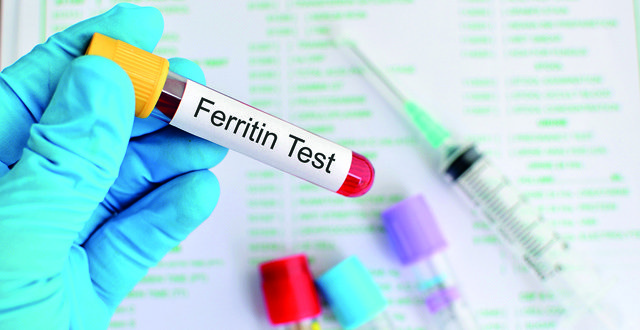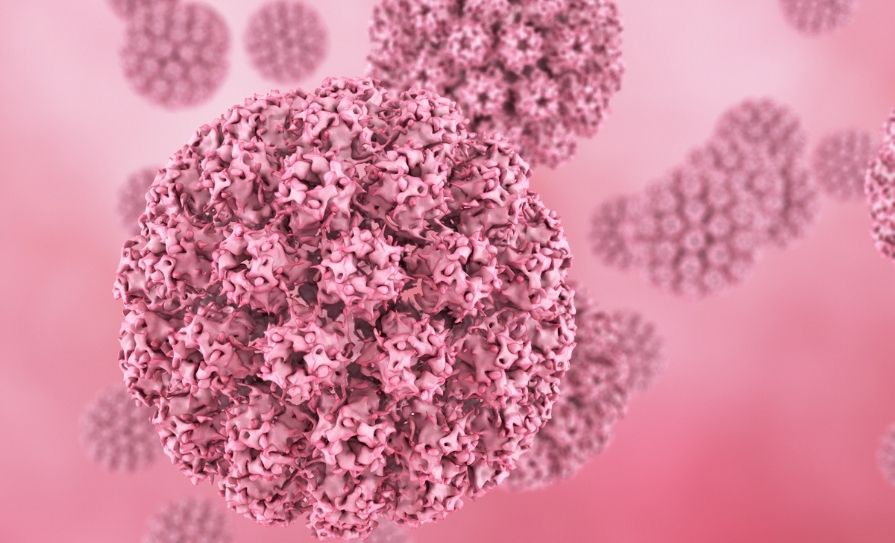A look at the incidence, diagnosis and treatment of Ireland’s most common genetic blood disorder
Haemochromatosis is a genetic disorder where an excessive amount of iron is absorbed from the diet, leading to progressive iron loading of parenchymal cells in the liver, pancreas, heart, joints and other organs.
Iron build-up is caused by the deficient production of hepcidin, an iron regulatory hormone secreted by the liver. This deficiency is due to a defective HFE protein in the liver, which under normal conditions can detect iron levels and signal hepcidin production accordingly.
There are two types of haemochromatosis: Primary haemochromatosis, where the condition is inherited (HH); and secondary haemochromatosis, where it results from another condition, such as chronic liver disease, or from treatments such as blood transfusions.
Hereditary haemochromatosis is the most common genetic disorder in Caucasians, particularly those of Celtic and North European descent. It is the most common hereditary disorder in Ireland, where its prevalence exceeds that of cystic fibrosis, phenylketonuria and muscular dystrophy combined. The condition affects one-in-200 people across Europe, and one in every 83 people in Ireland. One-in-five Irish people are carriers of the gene. Based on the prevalence and population data, it is estimated that between 40,000 and 50,000 Irish people are affected with the condition, however, only approximately 20,000 people have actually been diagnosed.
Haemochromatosis is a recessive gene disorder and can only develop if both parents are carriers of the HFE gene. While several different mutations to this gene have been discovered, there are two main mutations, C282Y and H63D, which cause hereditary haemochromatosis. The C282Y mutation is associated with most cases of hereditary haemochromatosis. H63D mutation seems to have less impact, as do the other much rarer types. Carriers (heterozygotes) have one altered and one normal HFE gene and are generally not affected by iron overload. A small percentage of carriers, however, do have iron overload, which can lead to organ damage and they should be monitored for symptoms on an ongoing basis. One-in-700 people with haemochromatosis have no mutation in the HFE gene. This is known as non-HFE haemochromatosis and is due to mutations in other genes.
Symptoms include nausea, weakness, abdominal pain, constipation and joint pain and if left untreated, haemochromatosis can lead to liver damage, heart failure and diabetes. Clinical features are secondary to the build-up of iron in various organs. The build-up is gradual, and symptoms do not usually appear until between 30 and 40 years of age. The majority of patients with HH are men aged between 40-to-60 years. Haemochromatosis affects as many women as men, however, as women lose iron through blood loss with menstruation and childbirth, they are generally protected until later in life, when they reach the menopause. Men also tend to be affected with the condition more severely than women.
Hereditary haemochromatosis is under-diagnosed, because of its late and multiple non-specific clinical presentations. In its fully-developed stage it can be fatal. Premature death may occur secondary to diabetes mellitus, cirrhosis, cardiac failure, and hepatocellular cancer. Alcohol, a diet high in iron, obesity and hepatitis B and C increase the chance of clinical symptoms. Early detection and treatment, however, prevents organ damage and allows a normal life expectancy. Hereditary haemochromatosis is particularly amenable to diagnosis, treatment and ongoing follow-up in the primary care setting.
Diagnosis
It can be difficult to diagnose haemochromatosis, as many of the typical symptoms can also result from other conditions. A diagnosis may be suspected, especially with two or more of the following:
Type 2 diabetes mellitus, especially those diagnosed at an early age, with elevated LFT, hepatomegaly, early-onset sexual dysfunction or abnormal iron markers.
Unexplained liver disease or liver disease with abnormal iron markers.
Chronic unexplained fatigue, weakness and abdominal pain.
Asymptomatic patients with incidental elevated LFT, ferritin or hepatomegaly.
Early-onset arthralgia, atypical arthropathy.
Early-onset male impotency, early menopause and loss of libido in women.
Early-onset arrhythmias and cardiomyopathy.
Unexplained increasing skin pigmentation or ‘permanent tan’.
First-degree relatives over 18 years of age of a confirmed case of HH.
Men aged 40-to-50 years.
To confirm a diagnosis, fasting transferrin saturation (TS) and serum ferritin (SF) levels are measured. Non-fasting tests may be carried out initially if considering the diagnosis and/or as part of a general screen. Both TS and ferritin are required, as people in the early stages of clinical disease can have normal ferritin, but raised TS. In addition, ferritin is an acute phase protein which can be raised in inter-current illness. If the TS is >50 per cent, a fasting TS and ferritin is needed, as it avoids the effects of diet and diurnal variation.
TS levels more than 45 per cent are strongly suggestive of hereditary haemochromatosis, but do not necessarily indicate a need for treatment, unless the ferritin threshold is exceeded. If there has been recent blood loss for any reason, this result may be normal.
Ferritin levels of more than 300ng/ml for men and post-menopausal women and more than 200ng/ml for pre-menopausal women are suggestive of minimal iron overload. Moderate iron overload is defined as ferritin greater or equal to 500ng/ml, and severe overload as ferritin greater than or equal to 750ng/ml.
If iron studies are positive, then genetic testing should be performed for C282Y and H63D mutations following appropriate counselling and discussion regarding the implication of positive test results. Other investigations carried out include: Urea and electrolytes; liver function tests; blood sugar; urinalysis; oral glucose tolerance test; HbA1c lipid profile; ECG; chest x-ray; and x-ray of affected joints. A liver biopsy may be required for those who are likely to have significant liver damage and one or more of the following: Abnormal transaminases; ferritin>1,000; and alcohol abuse. If liver cirrhosis is present, the patient must be monitored for the development of hepatocellular cancer by liver ultrasound and estimation of serum alpha feta protein levels six-monthly.
Screening
First-degree relatives of individuals diagnosed with hereditary haemochromatosis should be screened. Consideration should also be given to second-generation relatives. The European Association for the Study of the Liver (EASL) recommends that children are not screened until they reach an age where they can understand the implications of the test, can give informed consent, and take responsibility for the results. Consideration should be given to screening the diagnosed individual’s partner, as this would have implications for screening of children if both parents are carriers of the hereditary haemochromatosis gene. Screening should include fasting iron studies and genotyping. Possible consequences of genetic testing in relation to life insurance should also be explained.
Treatment
Treatment by venesection is commenced when there is evidence of iron overload, and 400-500mls of blood is removed on each occasion. When SF is greater than normal, venesection is performed twice weekly to twice monthly, until ferritin is between 25-50ng/ml. This can take up to 18 months. When normal levels are reached, venesection is tailored to individual requirements. SF levels of 50-100ng/ml and TS of less than 50 per cent can be maintained by about four venesections per year.
A strict iron-deficient diet is not recommended, but iron-rich or iron-fortified processed foods should be avoided or eaten in moderation. Iron and vitamin C supplements should be avoided. Drinking too much alcohol, especially with meals, should be avoided, as this can increase iron absorption and cause liver disease. Alcohol has been shown to suppress hepcidin production, leading to a further increase in iron absorption and progression of the disease. Tea and dairy products with a meal are recommended to reduce the amount of iron absorbed.
Blood donation
Many hereditary haemochromatosis patients can now become blood donors. The Irish Blood Transfusion Service (IBTS) aims to collect 12,000 donations annually from hereditary haemochromatosis donors, which is approximately 10 per cent of the national blood supply. For many patients, this means they can now attend blood donation clinics closer to home and at a more convenient time. However, donors must meet specific haemochromatosis management criteria (Table 1). Full details are available at www.giveblood.ie/Can-I-Give-Blood.
Support
The Irish Haemochromatosis Association is a registered charity which provides support and information for patients and their families with haemochromatosis and related disorders. The Association raises awareness of haemochromatosis in both the medical and general population, facilitates networking among members, and encourages screening of members’ extended families.
Contact details: www.haemochromatosis-ir.com. Phone: 01 8735911. Email: info@haemochromatosis-ir.com.
References on request
Haemochromatosis causes serious ‘stealth’ disease but could be easily treated
Priscilla Lynch
The Western world’s most common genetic disorder causes far higher levels of serious disease and disability than previously thought, despite being easy to detect and treat. Two major studies have revealed that haemochromatosis, previously thought to be a low-level health risk, actually quadruples the risk of liver disease and doubles the risk of arthritis and frailty in older age groups. It also causes higher risk of diabetes and chronic pain. The studies, which were based on UK Biobank data, found that the mortality rate from liver cancer in men with the relevant genes was significantly higher than expected, although the number of deaths was small. The research team analysed data from 2,890 people with the two genetic mutations (HFE C282Y homozygous) that define most diagnoses of haemochromatosis. Of that group, one-in-five men and one-in-10 women with the mutations developed additional diseases, compared to those without mutations. The team found that both men and women with the mutations (aged 65-to-70 years) were much more likely to suffer from frailty and chronic pain and had lower muscle strength. The researchers found that in men, 1.6 per cent of all the hip replacements and 5.8 per cent of all liver cancers occurred in those with the two haemochromatosis gene mutations. The research, published in the BMJ and The Journals of Gerontology: Medical Sciences, suggests that routine screening may be needed for people at risk of haemochromatosis. Prof David Melzer, from the Universities of Exeter in the UK and Connecticut in the US, who led the research, said: “The haemochromatosis mutations were thought to only rarely cause health problems. We’ve shown that hereditary haemochromatosis is actually a much more common and stealth disease, including in older people. We now need to test ways of screening and diagnosing haemochromatosis earlier. It’s exciting to think that better care might prevent so much unnecessary disease.”
Table 1: IBTS blood donation criteria for haemochromatosis patients
| •Must have completed iron depletion therapy, with at least one therapeutic venesection without complication, and be in the maintenance phase defined by IBTS as requiring no more than eight venesections per year. |
| •Can only attend an IBTS clinic up to four times a year, with 90 days between venesections. |
| •Must not have had a venesection in the two weeks prior to the blood donation. |
| •Must not have a serious complication of HH, such as liver cirrhosis, cardiomyopathy, cardiac arrhythmias, or insulin-dependent diabetes mellitus. |













Leave a Reply
You must be logged in to post a comment.